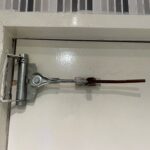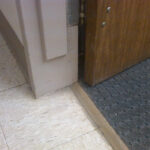 Several years ago, probably around the 20th anniversary of the fire in an apartment building in the Westlake section of Los Angeles, I did some research on this fire. I even talked to the local fire marshal. My interest was based on reports that fire doors in the apartment building were propped or even nailed open when the fire occurred, allowing smoke and flames to spread freely.
Several years ago, probably around the 20th anniversary of the fire in an apartment building in the Westlake section of Los Angeles, I did some research on this fire. I even talked to the local fire marshal. My interest was based on reports that fire doors in the apartment building were propped or even nailed open when the fire occurred, allowing smoke and flames to spread freely.
This week I received a news alert about the fire – suspected arsonists had been arrested – almost 24 YEARS after the fire was set. Seven children were killed in the fire along with three women – two of whom were pregnant. The suspected arsonists will face 12 charges of murder.
Here is a short news report from CBS Los Angeles about the arrests:
The media will undoubtedly focus on the success of investigators in making the arrests, the tragic loss of life, and the impact of gangs and drugs. But for those of us who understand the value of fire doors, there are lessons from this fire that we can share. The fire was set in the 2nd floor corridor, yet all of the victims were found in the 3rd floor corridor. There were fire doors on the stairwells and dividing the corridors so at least one means of egress would be available if there was a fire. These opening protectives, along with the apartment entry doors, should have helped to deter the smoke and flames long enough for firefighters to aid the building’s residents.
The reason the fire doors didn’t provide such protection is because they were open when the fire occurred. The fire was discovered by the resident of a second-floor apartment, who then escaped out the window leading to the apartment balcony. The apartment entry door was not equipped with a closer, and the open door allowed the fire to enter the apartment, where it was fed by oxygen through the balcony window.
This information is detailed in this report, which also includes the following summary:
L.A. fire officials indicate that the corridor and stairway fire-rated doors were propped or nailed open for ventilation at the time of the fire allowing smoke to spread rapidly and cutoff access to exits. At least 16 apartments were damaged by the fire. An incendiary fire earlier this month damaged two other apartments. During the investigation of that fire, officials found that smoke detectors were not working and that fire doors were propped open or missing in violation of the city fire code. The Associated Press reported that the assistant building manager has confirmed that smoke detectors were not working at the time of the fire and that the building owner was made aware of the defect after the earlier fire but claimed they were too expensive to repair.
A 1993 article in the Los Angeles Times described fire code violations in the building:
The management of a Westlake District apartment building was cited last month for fire code violations similar to the ones blamed for the rapid spread of the suffocating fire that killed eight people, fire officials said Tuesday.
The violations included faulty smoke detectors and fire doors that had been propped–and even nailed–open, officials said.
The owners were ordered in April to place a 24-hour fire watch on the building until the defects were corrected. Officials said Tuesday it was unclear whether the building management had complied with those orders.
Open fire doors were cited by City Fire Chief Donald Manning as a main contributor to the loss of life in Monday’s blaze. Manning said the fire code violations could result in criminal charges.
This fire was also mentioned in a report called Selected Published Incidents Involving Fire Doors, which was compiled for me by NFPA’s One Stop Data Shop back in 2009 (the report is available here). We need to continue to share this information, to educate facility managers and the general public about the purpose of fire doors and the rules that apply, and to support the need for annual fire door assembly inspections. Visit the Fire Doors page on this site for more information.
Photo: Al Seib / Los Angeles Times
You need to login or register to bookmark/favorite this content.






Leave A Comment